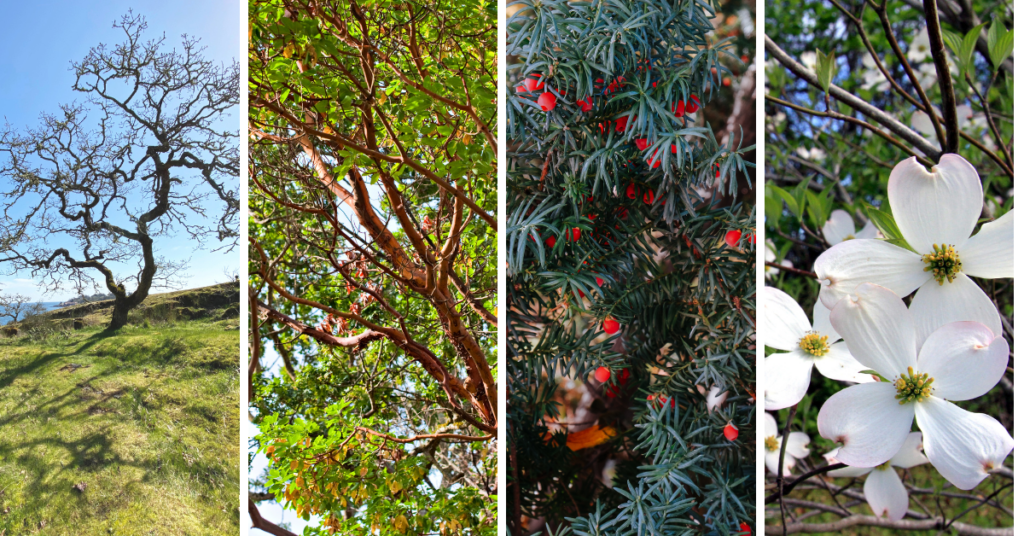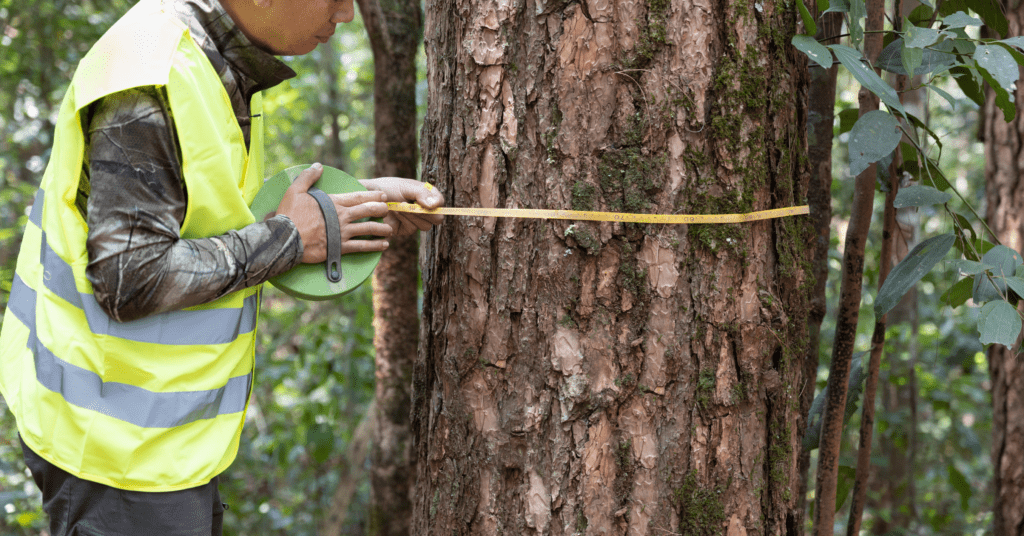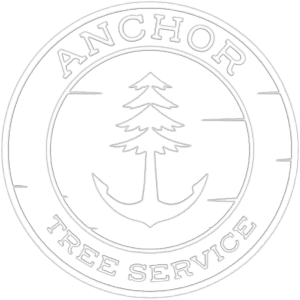When working with trees in Victoria, it’s crucial to be aware of the Tree Protection Bylaw. The city is dedicated to preserving its urban forest and ensuring a sustainable future. This bylaw protects trees on private property, whether or not development is taking place.
Protected Trees
What is considered a protected tree?
(1) ANY tree over 30cm DBH (Diameter at breast height)
(2) Some native tree species are protected earlier in life, see the two special categories below:
(a) Tree with diameter greater than 4cm measured at 15cm above grade OR greater than 2m in total height:
(i) Garry Oak
(ii) Arbutus
(iii) Pacific Yew
(iv) Pacific Dogwood

(3) A hedge that contains any single stem with a DBH over 30 cm
(4) ANY tree located on municipal property
(5) Wildlife tree (must have visible nest of raptor, osprey, or heron)
(6) A tree that is on a slope where the slope grade is greater than 33% over 10m
(7) A tree that is within 15 meters of the natural boundary of a watercourse
How do I measure the DBH of my tree?
Measure the diameter of the tree at 1.4m (4ft, 7-inches) off the ground. If the tree is on a slope, measure from the highest point of natural grade around the tree.

Diameter can be found by measuring the circumference at this point and dividing by pi (3.14)
How do I calculate the DBH of my tree if it is multi-stem?
Measure the DBH of the three largest stems and add them together. The total of the three is the DBH.
For a hedge*, it is the DBH of the single largest stem in the hedge.
*A hedge is classified as a row of five or more trees of consistent size and form planted less than 1.24m apart from one another
Permits
Do I need a permit?
A permit is required when you wish to:
(1) Remove a protected tree or
(2) Conduct significant pruning on a protected tree that would be considered “altering”:
(a) Altering means making cuts larger than 10cm (4-inch) in diameter and/or removing more than 25% of the total canopy volume in one year. *Please note, topping or removing the live crown of the tree is not allowed
It’s crucial to assess the risks posed by trees near your home. Should I remove a tree close to the house? Consider factors such as potential damage to foundations and falling branches.
How much does a permit cost?
Tree Pruning
There is no fee for a pruning permit.
Tree Removal
(1) There is no fee to remove a hazardous tree or tree that is dead or has 50% or more of its crown dead
(2) For any other tree removal permit:
- For a lot that is less than or equal to 2,000m2 in size: $50 per tree
- For a lot that is between 2000m2 and 4000m2 in size: $100 per tree
- For a lot that is equal to or larger than 4,000m2: $250 per 4,000m2
Trees that grow too close to your house can cause a range of issues. What happens if a tree is too close to your house? You may experience root damage to your foundation and roof damage from overhanging branches.
Replacement Securities
For non-development related tree removal:
- A replacement security of $350.00 per tree or 4 meters of hedge length being provided as replacement. This is returned in two installments, 50% after the tree is planted and the remaining balance one year after planting
For development related tree removal:
- $2,000.00 per replacement tree of a species described in Part 1 or Part 3 of Schedule “E”
- $1,000.00 per replacement tree of a species described in Part 2 of Schedule “E”
- $2,000.00 per 4 meters of hedge length when the replacement tree is a hedge
What can you prune without a permit?
(1) Branches up to 4-inch (10cm) in diameter
(2) Remove up to 25% of the total canopy of the tree per year
Timing is essential for tree removal to ensure the health of your landscape. What is the best time of year to remove trees? Generally, late winter or early spring is ideal.
Replacement Trees
What are the replacement tree requirements?
1:1 when planting medium or large trees, or 2:1 if planting small trees.
Please note you must plant a medium or large tree as a replacement unless there is insufficient space on the lot, which must be confirmed by the director
What counts as a replacement tree?
Any tree that is classified as a medium or large size tree (see Schedule E, Part 1)
OR
Any species that has a height at maturity of greater than 10.0m (must be acceptable species to director)
See Schedule “E” of Victoria’s tree protection bylaw to see a list of acceptable replacement tree species
Where it is not possible to plant a medium or large replacement tree due to grade, topography, tree location, soil depth, or other requirements of the site, the Director may permit the owner to plant two small replacement trees of the species described in Part 2 of Schedule “E”
Understanding the difference between tree trimming and pruning can help you maintain healthy trees. What is the difference between tree trimming and pruning? Pruning is usually done for health reasons, while trimming focuses on aesthetics.
Do I have to plant a replacement tree?
Yes, if you conduct a permitted removal of a protected tree, you are required to plant replacement tree
In rare circumstances, if the Director of Victoria Parks determines that the lot cannot accommodate the required number of replacement trees, a $2,000 fee may be kept as cash-in-lieu for each replacement tree that cannot be accommodated. *This must be approved by the director
Refer to the bylaw for more information on how it applies to you. If you need professional tree services, Anchor Tree Service can guide you through the permitting process and help you comply with local regulations. For more information, visit the City of Victoria’s website.
For expert tree services in Victoria, BC, look no further than Anchor Tree Service. Our team of certified arborists is dedicated to preserving the beauty and health of your trees while ensuring compliance with local bylaws. Whether you need assistance with tree removal, pruning, or navigating the permit process, we are here to help. Contact us today for a free consultation and let us take care of all your tree care needs. Trust Anchor Tree Service to keep your trees thriving and your property looking its best.


